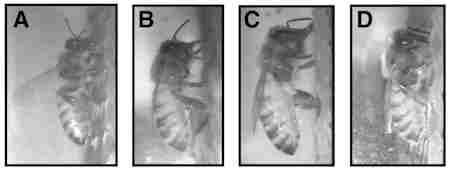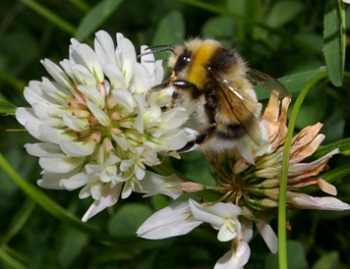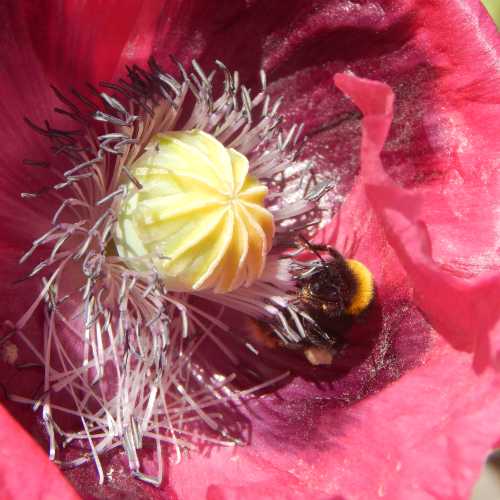Impacts of honeybee density on crop yields: a meta-analysis
This is a summary of a research paper: Impacts of
honeybee density on crop yield: A meta-analysis, by Rollin and Garibaldi (1).
Impacts of
honeybee density on crop yield: A meta-analysis,
Background
Honeybees are used to pollinate a large number of crops. Usually, honey bee hives are introduced into the location of the target crop at the time of onset of flowering of the target crop, usually with the objective of saturating the crop flowers, but there is no consensus (or replicated data) to indicate how many bees (or colonies of bees) are needed to give the best crop levels for individual crops.
A number of studies have looked at the recommended colony
density for a variety of crops – but there is a very wide range of
recommendations. For example (Delaplane
& Mayer 2000 Ref. 2), for onion crops, the recommended range is between 2
and 37 colonies per hectare, whilst for apples (another economically important
crop) it is between 1 and 16 colonies per hectare.
Delaplane and Mayer also showed that the recommended colony density can also vary between different species of the same plant such as between sweet cherry and sour cherry. This variation is seen across a wide range of different crops.
This lack of evidence leads to a tendency to saturate crops with as many honey bee colonies as available on the assumption that placing more colonies in a crop increases crop production. However that assumption has never been shown to be correct – it remains an assumption.
It may be that the link between bee colony density and crop
increase is ‘non-linear’ – that is that doubling the number of colonies might
not necessarily double the crop. It may
be that there is a colony density limit for individual crops above which
increasing colony density creates no further increase in crop levels.
The ‘recommendations’ also do not take into account pollinator preferences – that is to say that if the pollinators have a preference for another nearby floral source, then increasing colony numbers will not necessarily improve crop levels.
Honey bee colony size may also vary, as does hive design around the world. Additionally, pathogen infestation may also vary between colonies. All these factors make it difficult to create any useful recommendation as to optimal colony numbers for optimal crop production.
Thus, the study asks three questions:
- what is the effect of honey bee densities on crop productivity?;
- at which honey bee density do benefits for crop productivity stop improving?;
- how do these benefits change for different crops worldwide?
Definitions: honey bee density is represented by colony density (number of colonies per hectare) or flower visitation rates. Crop productivity is measured by fruit set; seed set; fruit weight; fruit yield.
Study
This is a meta-analysis – an analysis of previously published studies.
Parameters for selection = in order to be included in the analysis, the studies needed to fulfil 5 requirements:
- is it an empirical study rather than a review of other studies or previously existing data?;
- does it contain original results (rather than restating previous data)?;
- does it contrast at least two different levels of honeybee density?;
- does it measure either honeybee density or flower visitation rates?;
- does it report the effect of honeybee densities on crop production (as defined above)?
Twenty two studies fulfilled these criteria.
Results / Discussion
Both colony density and visitation rates increase all crop production variables measured. For visitation rates the results were ‘non-linear’ – suggesting that there is an optimum number of visits per flower (8 – 10 visits per flower, but it’s not clear in what time period) beyond which there is no improvement in crop productivity.
Although there seems to be a linear effect between colony density and crop productivity, the effect of visitation rates seems to be greater.
Interestingly (though perhaps not surprisingly), the effect
of visitation rates seems to be greater for crop plants with two sexes than for
hermaphrodite plants.
The authors state that current practice assumes that more honey bees are better for crop productivity, but that their study suggest there is an optimum level of honey bees, above which no increase in productivity occurs.
Unfortunately their study doesn’t provide any guidance or evidence as to what those optimum levels may be, simply stating that current studies are not designed for finding such an optimal level of honey bee hive densities or honey bee visitation rates, and the relationship between colony densities and visitation rates is still unclear.
They
also state that visitation rates could be used as a proxy to guide management
of pollinator densities, although they do not suggest how this may be done by
farmers in the field.
Refs:
1. LA Rollin O, Garibaldi LA. Impacts of honeybee density on crop yield: A meta-analysis. J Appl Ecol.
2019;00:1–12. https://doi.org/10.1111/1365-2664.13355
2. Delaplane, K. S., & Mayer, D. F. (2000). Crop Pollination by Bees. Wallingford, UK: CABI Publishing
Bees love clover!
It's great in lawns, saves mowing, and council's could save money by planting it!
Do bees sleep?
Apparently they do, but how do we know?

If you found this page helpful or interesting, I'd really be grateful if you would share it with others - if not this page, perhaps another, such as Gardening For Bees.
Thank you so much :) .







